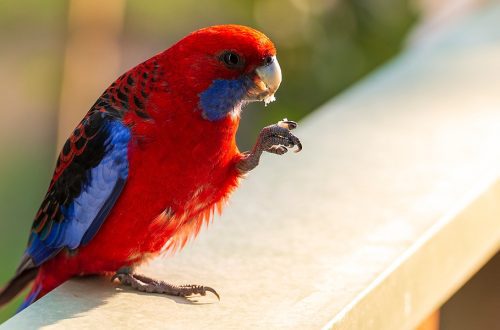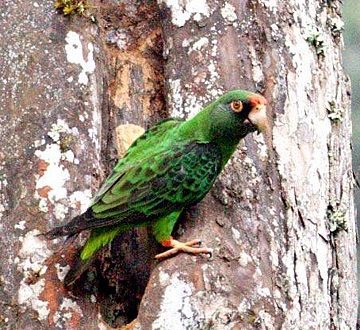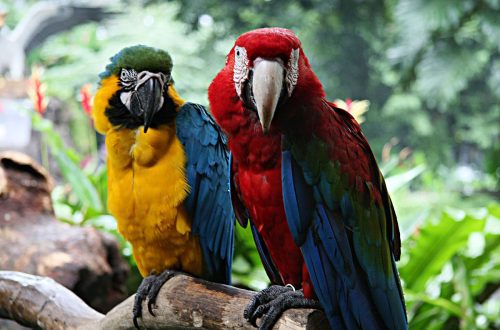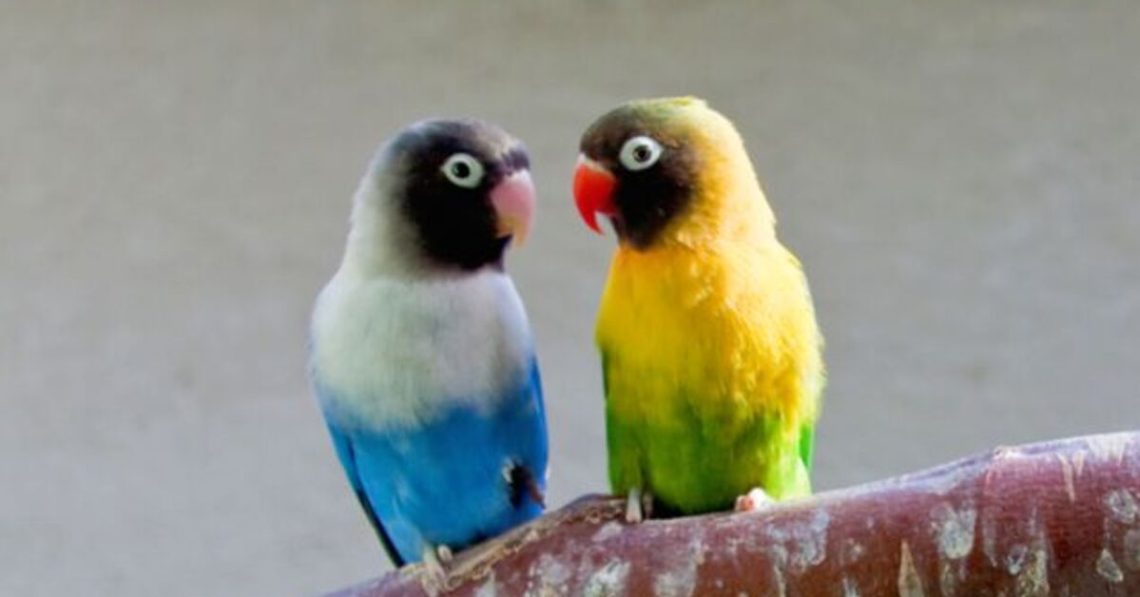
Masked lovebird
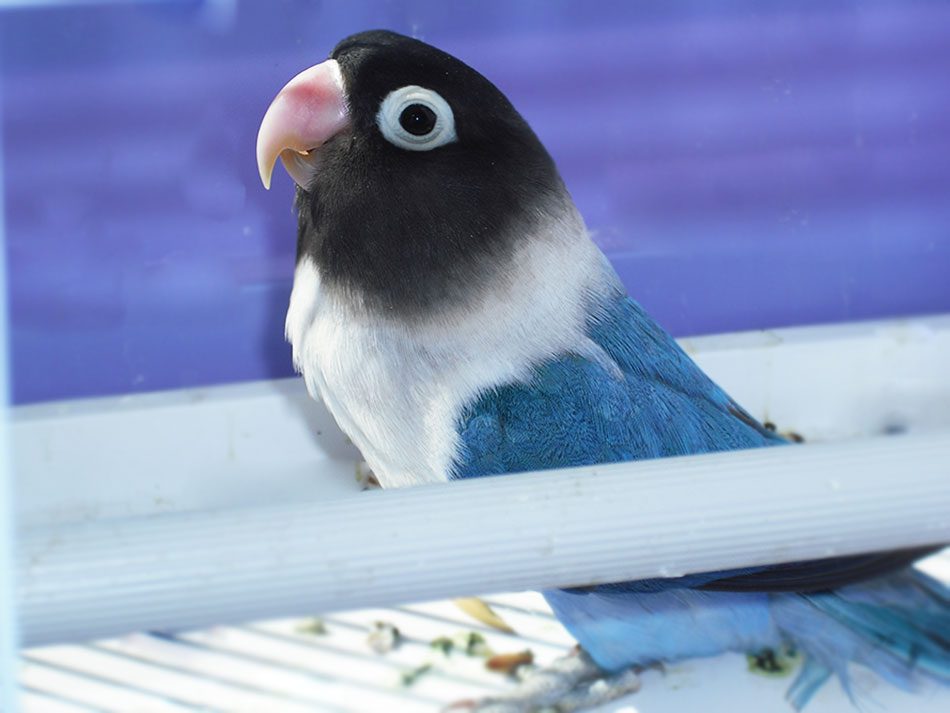
| Masked lovebird | lovebird personatus |
| Order | Parrots |
| family | Parrots |
| Race | Lovebirds |
Appearance
A small short-tailed parrot with a body length of 14,5 cm and a weight of up to 50 g. The length of the tail is 4 cm. Both sexes are colored the same – the main color of the body is green, there is a brown-black mask on the head, the chest is yellow-orange, the rump is olive. The beak is massive, red. The wax is light. The periorbital ring is naked and white. The eyes are brown, the paws are gray-blue. Females are slightly larger than males, have a more rounded head shape.
Life expectancy with proper care is 18 – 20 years.
Habitat and life in nature
The species was first described in 1887. The species is protected but not vulnerable. The population is stable.
They live in Zambia, Tanzania, Kenya and Mozambique in flocks of up to 40 individuals. They prefer to settle on acacias and baobabs, not far from the water in the savannas.
Masked lovebirds feed on seeds of wild herbs, cereals and fruits.
Reproduction
The nesting period falls on the dry season (March-April and June-July). They nest in colonies in hollows of isolated trees or small groves. Usually the nest is built by the female, in which she then lays 4-6 white eggs. The incubation period is 20 – 26 days. The chicks hatch helpless, covered in down. They leave the hollow at the age of 6 weeks. However, for some time (about 2 weeks), parents feed them.
In nature, there are non-sterile hybrids between masked and Fisher’s lovebirds.



